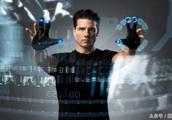

Holograms are fantasy; VR and AR are reality
Tom Cruise in 'Minority Report' inspired many tech and gaming companies
Like flying cars and robot assistants, holograms have spent almost my entire life just a few years away from being "ubiquitous". The hologram rush began when National Geographic featured a 3D skull, eagle and globe on the cover of its magazine. Naturally, with the sci-fi concept finally becoming tangible, people are starting to think that holographic TVs will soon bring lifelike 3D images into the living room.
It didn't happen, it didn't really come close. In 1992, Sega released "Holosseum", a holographic arcade game that used a "smoke shroud" technique. The image in the game is flat, but it seems to float on a black stage, and the gameplay is also two-dimensional. By the turn of the century, holograms were undetectable, except to protect currency and certain products from counterfeiting. Holographic homes and conference rooms have always been the stuff of science fiction.
But people still dream of bringing holograms into their lives. From Minority Report's holographic transparent touchscreen to Blade Runner 2049's 3D dynamic holographic projector, movies predict that we'll all naturally interact with ghostly holograms. Games: Helpful holograms pop up in hallways in Doom VFR, and Microsoft's Halo brings Cortana to screen and glove volumetric projections.
Meanwhile, in the real world, RED now apparently plans to sell a holographic phone this summer for $1,300 and up. If 5G cellular chipmakers and cellphone carriers are to be believed, actual holograms of some kind will start appearing in homes and conference rooms over the next decade, all powered by next-generation wireless networks.
These near-future technologies have been preceded by a new backlight technology based on a different display technology – specifically, a shift from projectors to small screens installed in front of participants’ eyes. AR and VR glasses display holograms mixed with a real-world environment (AR) or placed within a completely artificial space (VR).
Microsoft teased the development more than three years ago when it announced HoloLens, but even two years after the $3,000 AR headset was sold to developers, it remains a technological curiosity. While its holographic Minecraft-level demos are cool, there's still no real consumer product - something Microsoft seemed to understand in 2015, when it described HoloLens as being on a "five-year journey" to consumers.
Some people don't want to wait until 2020. Last week, Leap Motion debuted the Polaris, a superior alternative that it claims can be had for under $100. Its headset looks a bit like Jetsons' interpretation of a futuristic samurai helmet, but it packs dual high-resolution screens and advanced hand tracking. Like the HoloLens, the "real consumer product" question applies here, but Leap decided to start a conversation about making virtual interfaces a reality.
Have to admit, the idea of "holograms" being presented via AR and VR tricks rather than real-time projections doesn't bother me; thanks to a steady diet of sci-fi movies like the Iron Man series, there's a lot of room for those who have access to disappearing gadgets and tools. Feel excited about the day. If this is done with a pair of glasses, then I'm fine with that as long as the overall experience is much better than what I would have had without them.
Like Microsoft, Apple has been working on virtual interfaces for years. After originally envisioning a virtual computer projected onto a wall, Apple recently filed for a patent for using VR glasses to display traditional computer interfaces – including word processing. Forget carrying your laptop; instead, you just throw your Bluetooth keyboard into your bag and view your virtual computer screen through your glasses.
Apple patent application for VR computer interface
Until a complete solution is available, I'll be content watching Leap Motion's demo videos and imagining how future virtual tools will work. They're only a few years away from this...right?
